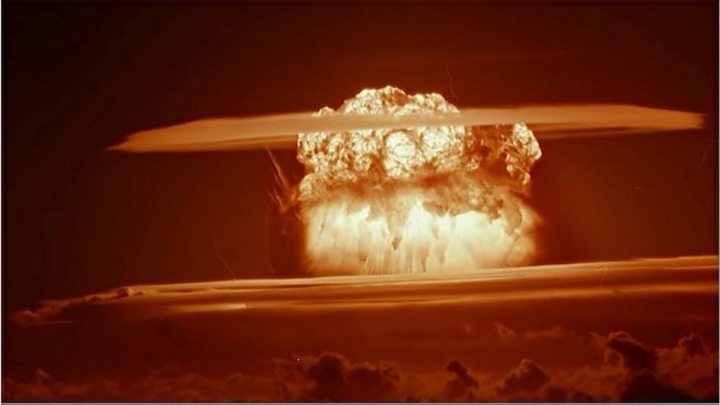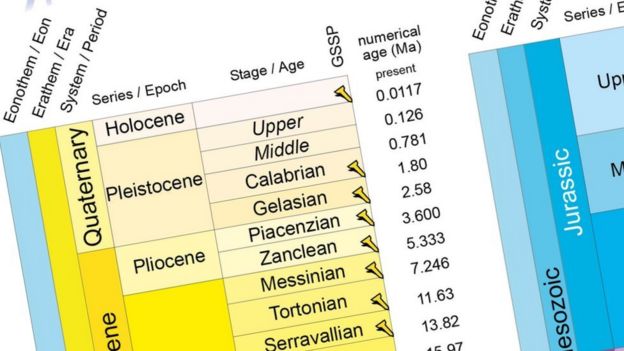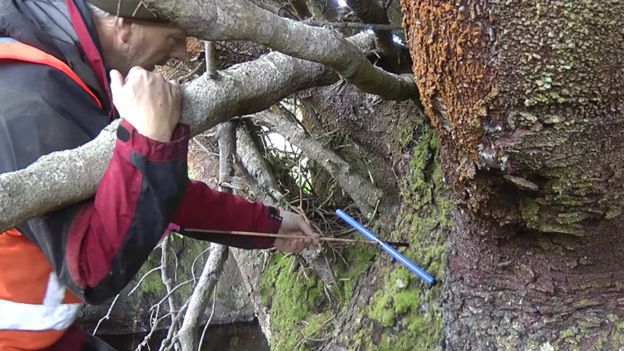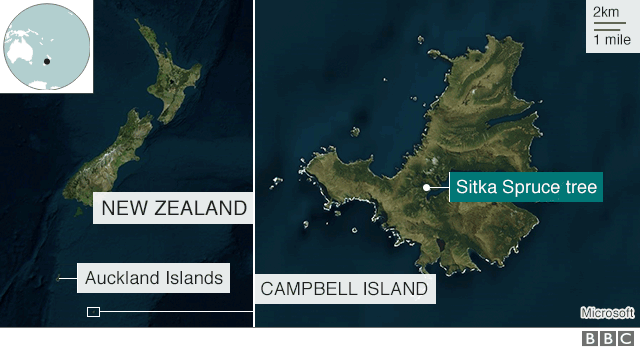By Jonathan Amos, BBC, February 19, 2018
It’s been dubbed "the loneliest tree on the planet" because of its remote location, but the Sitka spruce might represent something quite profound about the age in which we live.
The tree, sited on Campbell Island in the Southern Ocean, records in its wood a clear radioactive trace from the A-bomb tests of the 1950s and 60s.
As such, it could be the "golden spike" scientists are seeking to define the start of the Anthropocene Epoch - a new time segment in our geological history of Earth.
The suggestion is that whatever is taken as the golden spike, it should reflect the so-called "Great Acceleration" when human impacts on the planet suddenly intensified and became global in extent.
This occurs after WWII and is seen for example in the explosion in plastics production.
Chris Turney, from the University of New South Wales, Australia, and colleagues, say the Sitka spruce captures this change exquisitely in the chemistry of its growth rings.
"We're putting this forward as a serious contender to mark the start of the Anthropocene. It's got to be something that reflects a global signal," Prof Turney told BBC News.
"The problem with any Northern Hemisphere records is that they largely reflect where most major human activity has happened. But this Christmas tree records the far-reaching nature of that activity and we can't think of anywhere more remote than the Southern Ocean."
The spruce shouldn't really be on Campbell Island, which is some 600km from the southern tip of New Zealand. Its natural habitat is found at northern Pacific latitudes, but a single tree was placed on the subantarctic island around 1905, possibly as the start of an intended plantation.
The next nearest tree is on the Auckland Islands about 200km to the northwest.
Prof Turney and colleagues drilled a fine core into the spruce, which has wide, sharply delineated growth rings, and examined the wood's chemistry.
They found a big leap in the amount of carbon-14 in a part of a ring representing the latter half of 1965.
This peak in the radioactive form of the element is an unambiguous signature of the atmospheric nuclear tests that occurred post-war.
The radioisotope would have been incorporated into the tree as carbon dioxide through photosynthesis.

Co-author Mark Maslin, from University College London, UK, says the date comes just after the ban on atmospheric nuclear testing (1963), but describes that moment when the fallout from previous detonations had truly gone worldwide and even inveigled itself into the biosphere of the planet.
"If you want to represent the Anthropocene with the start of The Great Acceleration then this is the perfect record to define it. And what's really nice is that we planted a tree where it shouldn't be which has then given us this beautiful record of what we've done to the planet."
 IUGS
IUGS
The international geological community is currently assessing how to update the "official" timeline of Earth history - the famous Chronostratigraphic Chart featured in all science textbooks.
The working group charged with leading the discussion recently concluded that the current epoch - the so-called Holocene, which has pertained for the last 11,700 years - could no longer constrain the immense changes taking place on Earth as a result of human activity.
The panel said the search should now be stepped up to find a suitable marker to define the onset of the proposed Anthropocene Epoch. Technically referred to as a Global Boundary Stratotype Section and Point (GSSP), the marker is more commonly called a golden spike.
For the start of the Holocene, the GSSP is a section ice drilled from the Greenland Ice Sheet. Its hydrogen chemistry records an uptick in warming as we emerged from the last ice age.
For the famous Cretaceous–Palaeogene (K–Pg) boundary 66 million years when the asteroid struck, wiping out the dinosaurs - the spike is an outcrop of rock in Tunisia that contains a strong trace of the element iridium that was delivered by the impacting space object.
 INTREPID SCIENCE
INTREPID SCIENCE
What will be key for any golden spike chosen to represent the Holocene-Anthropocene boundary is that it is long-lasting; that geologists a million years from now will be able to point at something and say, "There! That's the start of the Anthropocene Epoch."
"Radiocarbon persists in measurable amounts on the order of 50,000 to 60,000 years. After that, other radioisotopes associated with the bomb tests such as plutonium would still be there in the natural environment, preserving the signal," explained Prof Turney.
"We have archives of the spruce wood collected at the University of New South Wales in Sydney and at Invercargill in New Zealand at the museum and art gallery, so people can go and visit and put their finger on the actual moment we're suggesting the Anthropocene began."
Prof Turney and colleagues have published their study of the Sitka spruce (Picea sitchensis) in the journal Scientific Reports.

No comments:
Post a Comment